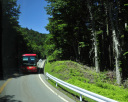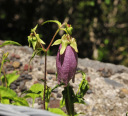| Mount Fuji - Fujisan (12,360 ft.) is the peerless, sacred mountain of Japan and one of the
most beautiful in the world. NEWS: The removal work of rocks that blocked the Fuji Yoshida Route finished and climbers can go to the summit of Mt Fuji from 3 p.m. July 9 according to Fuji Yoshida City officials. During the climbing season of July, August and September (10), During the climbing season of July and August, the trails are crowded@with climbers and pilgrims who start at night so that they can reach the summit in time to see the sunrise. At the base of the mountain lie the Five Lakes of Fuji (Fuji Goko) - Yamanaka, Kawaguchi, Nishi, Motosu and Shoji. All are noted for their beauty. The last eruption happened in 1707. It is said Tokyo, 75 miles distant, was covered in ashes six inches deep. The crater is some 1,968 feet in diameter. It takes two to three hours boarding an expressway bus outside the west exit of Shinjuku Station to reach the Fuji Five Lakes district which is the most popular route to climb Mt. Fuji. Lake Kawaguchi Route to the top of Mt. Fuji takes average upward 5 hours and downward 3 hours on foot from the 5th station. Buses run throughout the year to the Fuji Five Lakes district but to the 5th station of Mt. Fuji in July and August only. Bus Fares: 1,750 yen to Lake Kawaguchi and 2,700 yen to the fifth uphill station. All buses are reserved. For reservations, call Fujikyu Highway Bus Reservation Center 03-5376-2222 URL: http://www.fujisan-climb.jp/en/index.html Telephone: 0555-22-1111 (Fuji Yoshida City) |
Mt. Fuji viewed from the Panorama Lounge of Narukawa Art Museum at Lake Ashinoko
(Photos May 17, 2014)
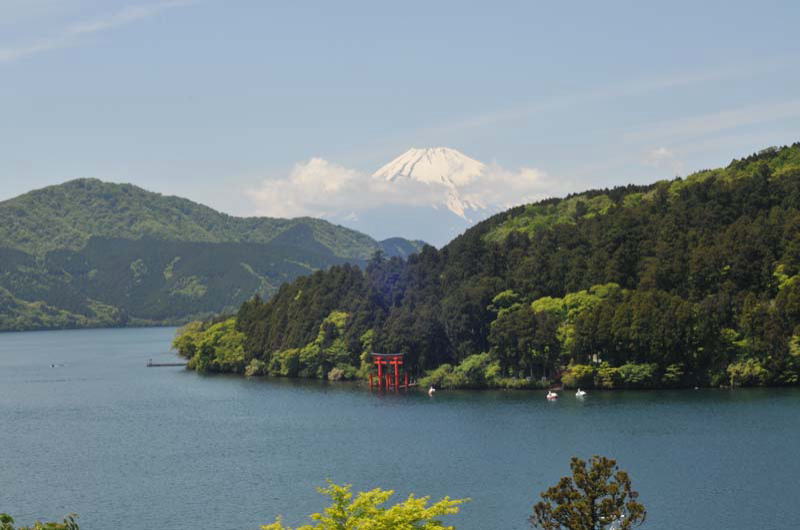




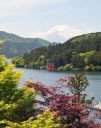
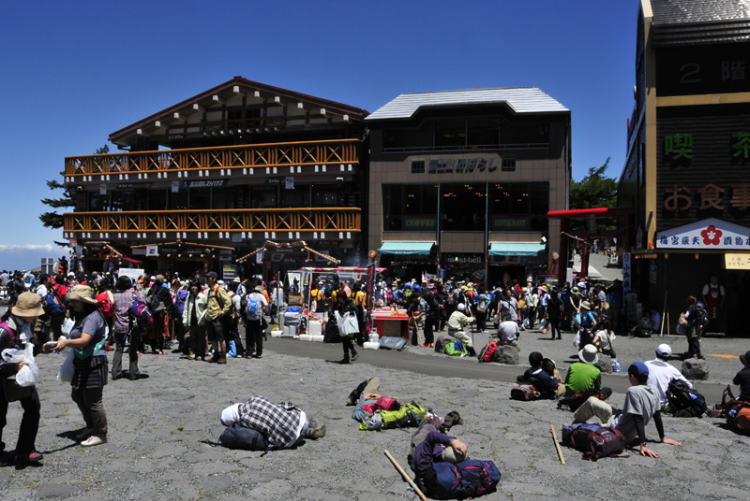
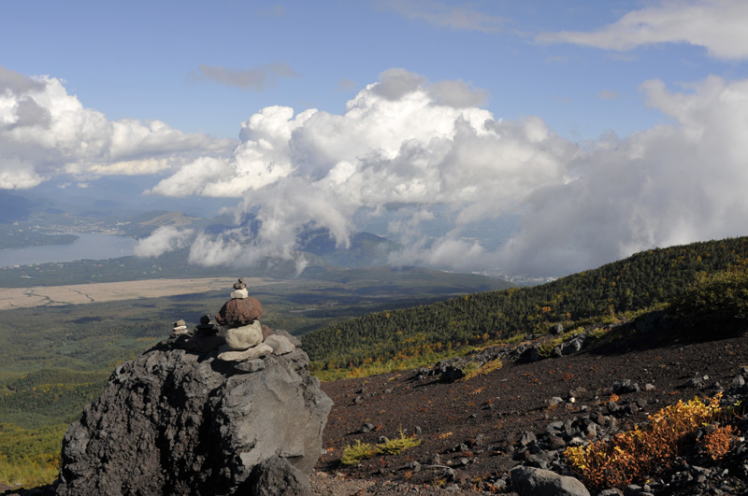






























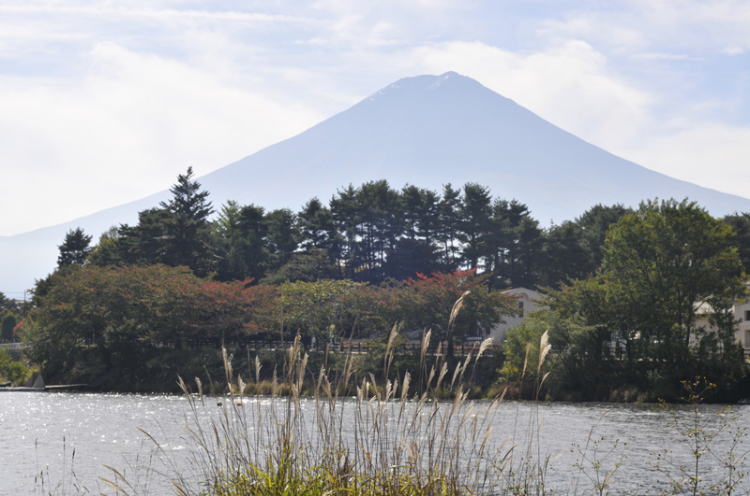
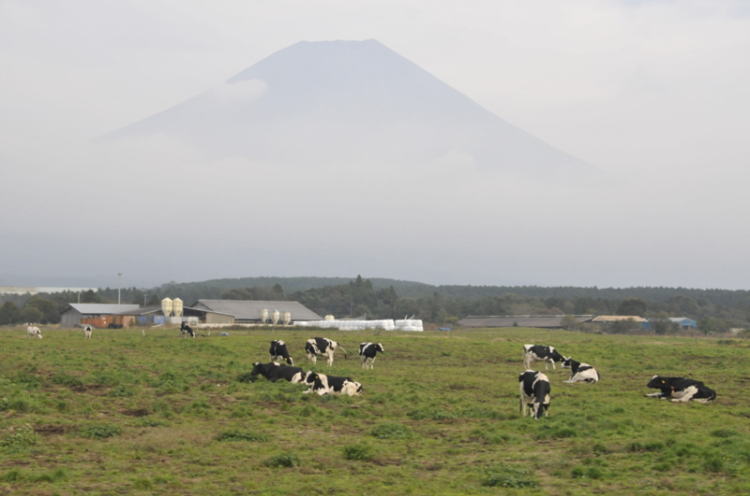















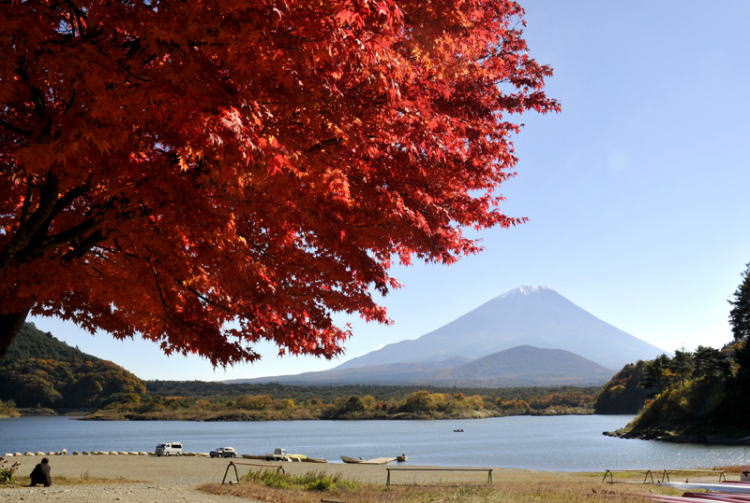
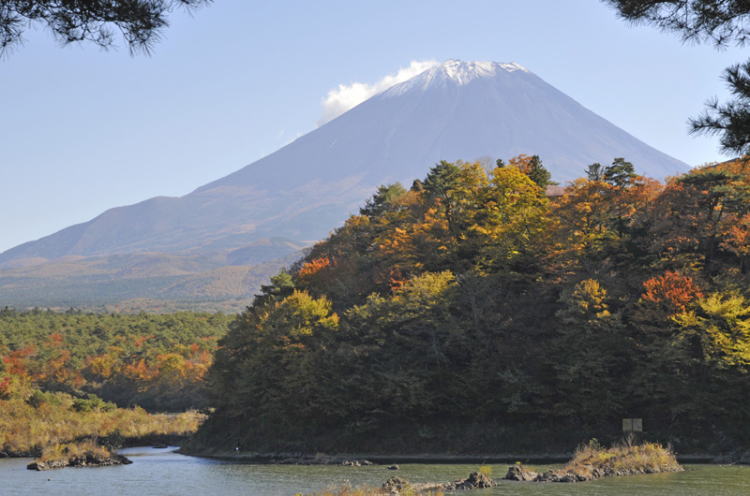




















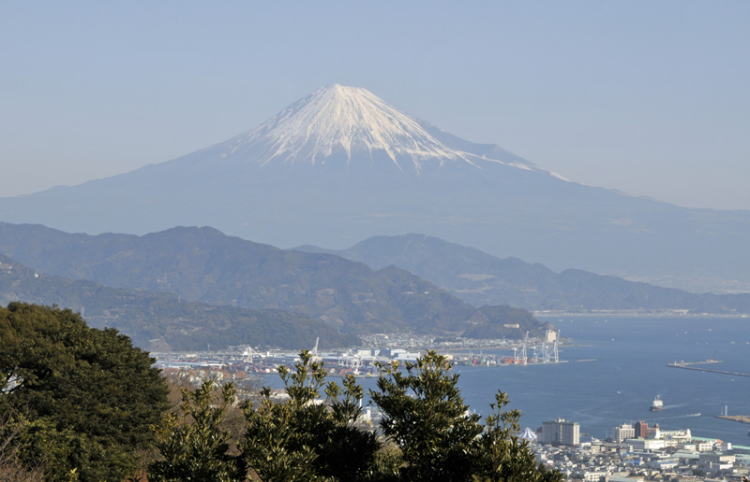





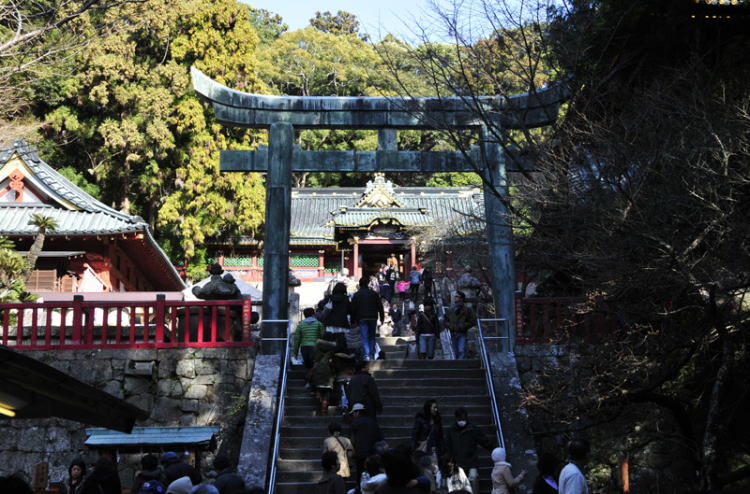
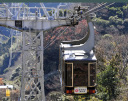

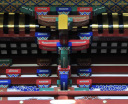



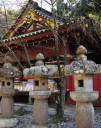


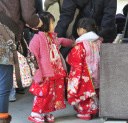







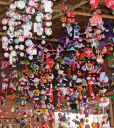
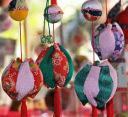

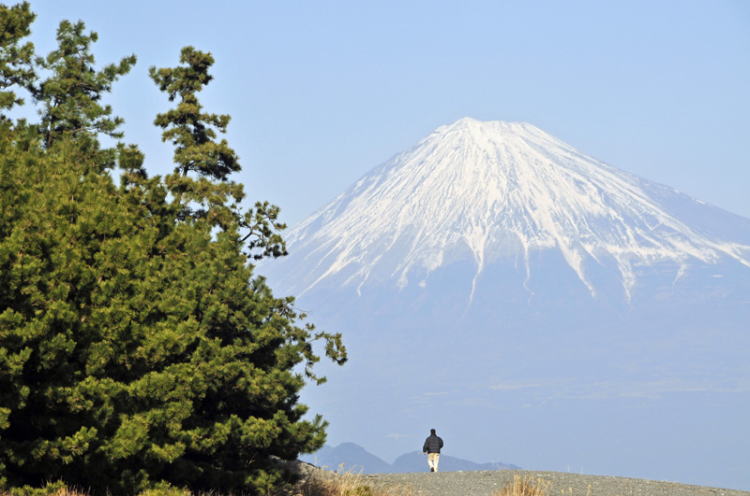
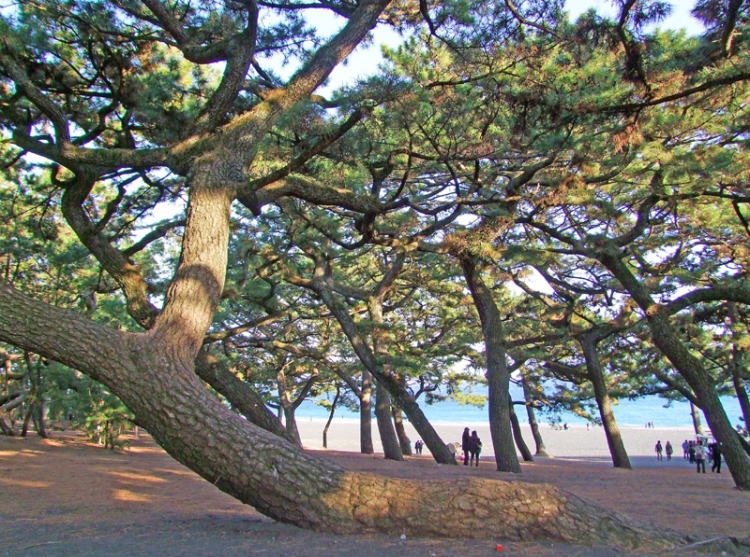










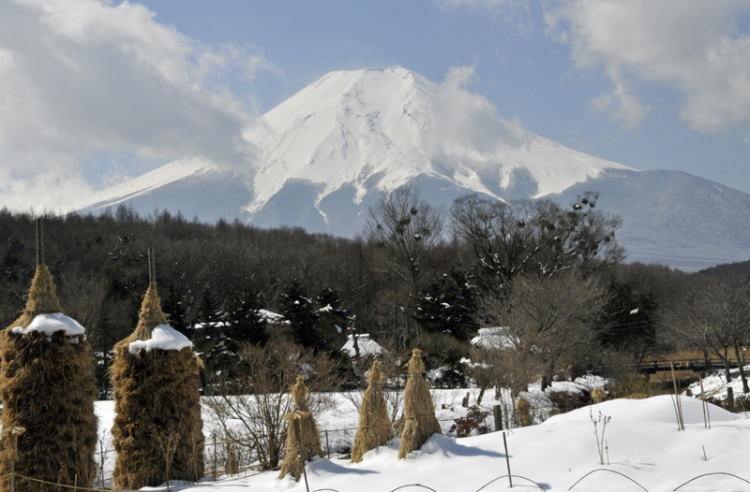










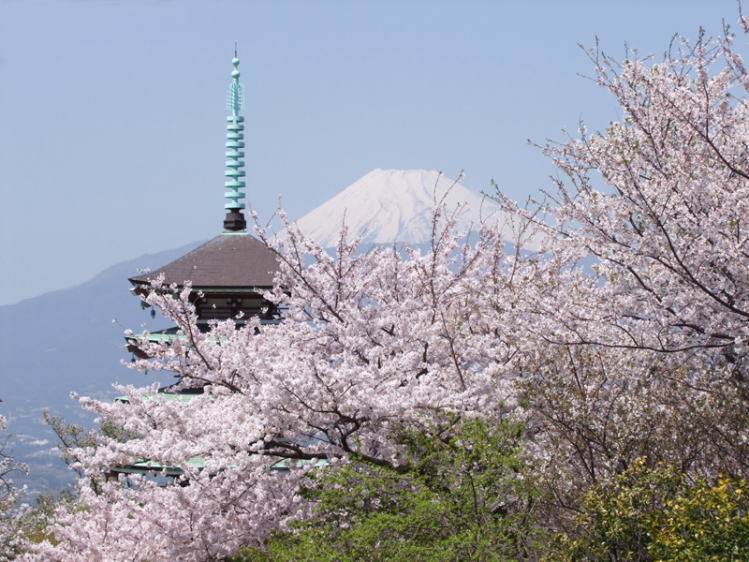





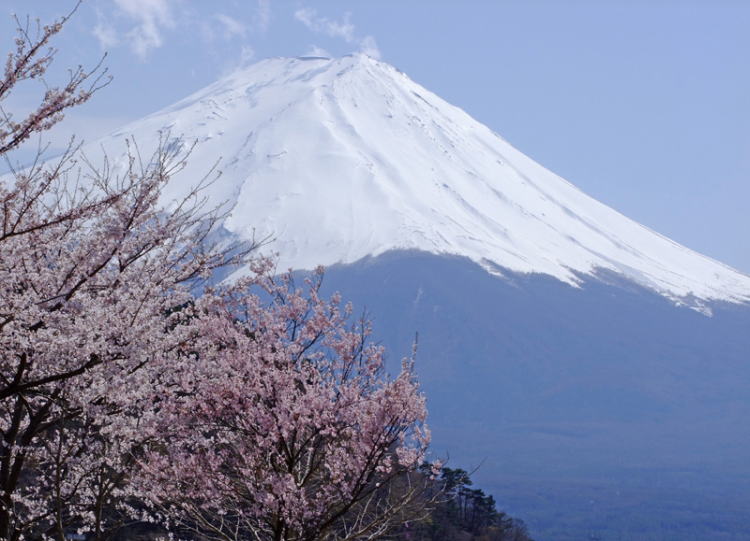










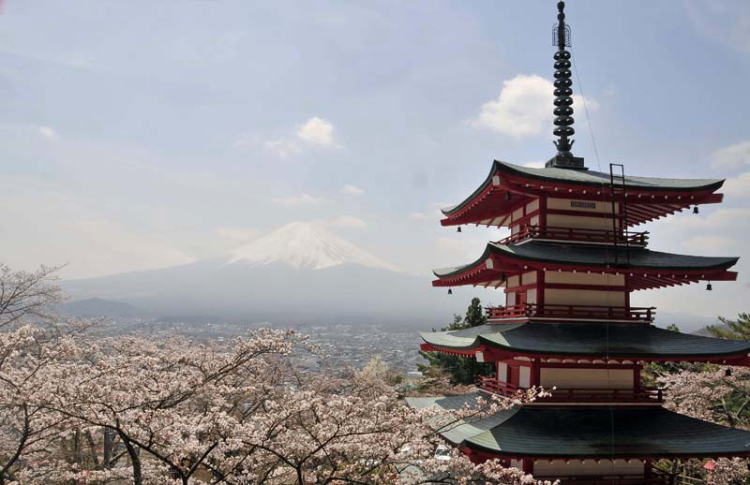





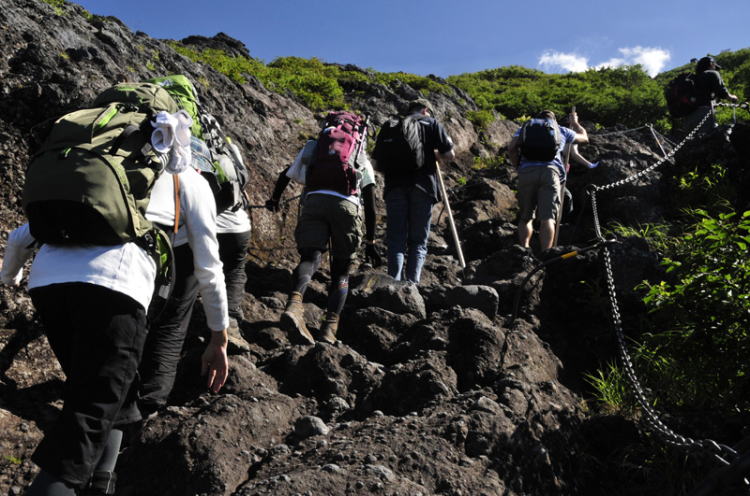 .
.
